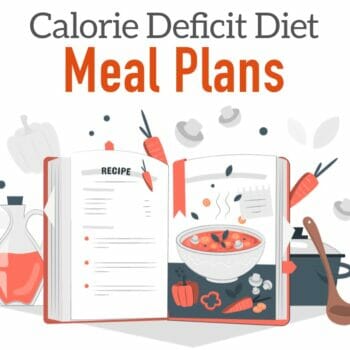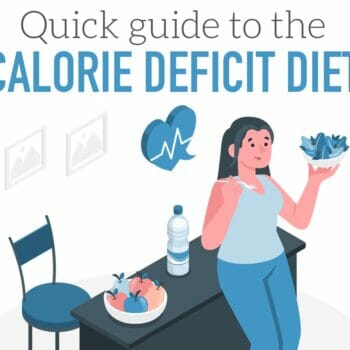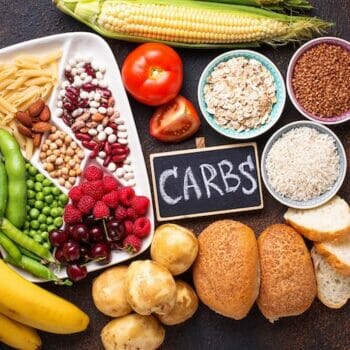How To Break a Weight Loss Plateau – Without Starving Yourself

After a few months of consistently losing weight, reaching a weight loss plateau is not uncommon.
You tried your best, and you lost weight. You gave it everything, and it hurt.
And then it all stopped.
You went out there and exercised harder. You watched everything you ate.
Nothing happened.
What causes a weight loss plateau?
Adaptation.
The human body is highly adaptive and will do its best to maintain equilibrium (homeostasis).
If you eat the same amount day in a day out, the body will eventually adapt.
The plateauing effect is the biggest motivation-killer – yet most diet books are strangely quiet on the issue (weight loss plateaus don’t make good testimonials).
Plateaus happen to most people.
Six ways to break a weight loss plateau
The best single word of advice is to make a change.
Change something. Anything. Please do it now.
Don’t make the mistake of doing the same thing over and over, expecting a different result.
You must counteract your body’s adaption to your diet and exercise.
1. Alter your macro-nutrient intake

The food we eat is split into three primary macronutrients: carbohydrates, protein, and fat.
Changing the ratios of macronutrients can help break a plateau.
If you are eating a diet high in carbohydrates – try eating fewer carbs and more protein.
If you have a carbohydrate snack daily at morning tea time – change it to a protein snack.
A macro-tracking approach to nutrition is a highly successful method of losing weight or body recomposition.
The macro approach is popular as it isn’t restrictive and is based on individual calorie needs.
Eating too little can stall your weight loss.
If you have been eating only 1200 calories for a long time, start eating more for a few weeks to stimulate your metabolism.
Macronutrient Plateau Breakers
- Instead of a fruit snack, eat a handful of nuts.
- If your diet is heavily bread-based, try reducing the bread and increasing the protein (say, a tin of tuna or chicken).
- Don’t be afraid to eat fat; it’s not the enemy.
Whatever you are doing consistently – try mixing it up a bit.
Want to know the exact macro-nutrient amounts you should eat? Use our macronutrient weight loss calculator.
2. Zig-zag calorie intake

Zig-zagging or calorie cycling is the process of varying daily calorie intake while maintaining the same weekly intake.
Instead of consuming exactly 1800 calories per day, you can vary your intake.
Eat 1500 calories one day and 2100 calories the next.
This can be as simple as halving then doubling a portion size or adding a post-workout shake into the plan.
Using the Zig-zag calculator at freedieting.com, we can see what this looks like.
If your daily calories for fat loss is 1860, a weekly zig-zag will look like this:
| Weekday | Daily Calories |
| Monday | 1861 |
| Tuesday | 1489 |
| Wednesday | 2233 |
| Thursday | 1861 |
| Friday | 1675 |
| Saturday | 2047 |
| Sunday | 1861 |
The zig-zag keeps your body guessing and keeps adaption at bay.
3. Add strength training to your exercise routine

If your only exercise is steady-state cardio (such as walking), it’s time to add some resistance.
Working your muscles strengthens bone tissue, increases lean mass, and boosts metabolic rate.
Many people have increased success with HIIT training.
How to start doing resistance training
- Join a gym and get a trainer to make you a program.
- Follow a bodyweight program, such as this classic 7-minute workout.
- Get some dumbbells at home and follow along with a Youtube trainer at home.
4. Change your exercise routine

Flowing on from the previous point: You must change something in your exercise routine.
The more you do a particular activity, the greater your body adapts, and this efficiency equates to less calorie burn.
If you walk a lot, try jogging, swimming, or cycling — anything that will change how your body works.
If you are doing low-intensity cardio work, try some high-intensity (short duration) exercise.
For example: instead of your usual slow jog – run as fast as you can for 30 seconds, then walk for 30 seconds. Do this four times in the middle of your jog.
Ten practical exercise ideas to break a weight loss plateau
- Use an exercise video
Some of us like to dance around the room, knocking over coffee tables and other assorted furniture. - Gym class
To name a few: Yoga, Pilates, or Zumba. - HIIT
High-Intensity Interval Training - Social sports
Join a Volleyball team. - Meet your friend for a walk
Instead of meeting for coffee. - Go hiking.
- Yoga
Maybe it’ll help you to relax. - Get a shiny new bicycle
And don’t leave it in the garage gathering dust. - Got Kids?
Get on the playground with them instead of staring at your phone on a bench. - Video games with movement
Get a Nintendo Switch and Ring Fit Adventure or Fitness Boxing. Do it properly or you’ll end up with tendonitis.
Okay, Mr. and Mrs. Hardcore, these activities probably won’t cut it for you, especially if you are already a fitness fanatic.
The issue here is that you MUST change what you are doing. Keep your body guessing.
5. Change your meal frequency

This is contentious, and some would argue that it doesn’t matter. But, it has worked for some.
It’s been a technique for bodybuilders: they eat 5+ meals daily. They claim the thermic effect of eating helps to burn fat. Energy expenditure is involved in the body processing food (particularly protein).
Some claim this is a myth, yet research shows that the thermic effect of food (TEF) is more significant for those eating a regular five meals a day, rather than a random variable number of meals.
How to change your meal frequency to break a plateau
- If you are eating three square meals a day, add snacks in between (which may mean reducing the portion size of the main meals)*.
- If skipping breakfast has been your thing, it’s time to start eating some breakfast.
*Be careful this doesn’t backfire.
I did this and ended up eating all the time thinking I was being healthy.
You still need to make wise choices and eat within your daily TDEE.
6. Plateau-breakers you can try
Here are some more things that have worked for some people:
- Get more sleep
Figure out what’s affecting your sleep quality. - Overeat
Might sound counter-intuitive, but after a period of sustained restricted eating, a day or two of big eating might be just the ticket. However, if you are a person that has problems with binging this could backfire – be careful. - Change your goals
Obsessed with the scales? Think about focusing on something else like being able to run 5km or getting stronger. - Intermittent fasting
Increase your daily fasting window to 12-16 hours and shorten your eating window. Fasting periods burn fat reserves to keep your body going.
A true story of breaking a weight loss plateau
Some of us seem to have more adaptive bodies than others.
I remember when I was eating a relatively rigid diet. I had meal plans stuck to the fridge, and I counted everything I ate.
I was doing three strength training sessions per week and as many as seven (often intense) cardio sessions a week.
After 3-4 weeks – the fat stopped coming off.
The frustration made me take my meal plans, screw them up and throw them away in disgust.
I was furious and disappointed. I felt that I was doing everything “right.”
So what was the answer?
Chill out and back off. I was becoming obsessional.
I started eating more, gradually reduced my cardio levels, and gave my body and mind a break. In the process, I have learned to eat more intuitively.
The funny thing is, even though I lost a bit more fat, I found I no longer cared. It all seemed like vanity to me.
Each of us is unique, and we must learn how our body responds – and how to work with that.
How to count macros for body transformation.
ReferencesReferences
- Klika, B., & Jordan, C. (2013). High-intensity circuit training using body weight: Maximum results with minimal investment. ACSM's Health & Fitness Journal, 17(3), 8-13.
- Farshchi, H. R., Taylor, M. A., & Macdonald, I. A. (2004). Decreased thermic effect of food after an irregular compared with a regular meal pattern in healthy lean women. International Journal of Obesity, 28(5), 653-660.
- Home illustrations by Storyset

 Calorie Deficit Meal Planner
Calorie Deficit Meal Planner Calorie Deficit Diet
Calorie Deficit Diet Carbs are Not Bad, Unhealthy, and Will Not Prevent Weight Loss
Carbs are Not Bad, Unhealthy, and Will Not Prevent Weight Loss Why is Diet and Exercise Such Hard Work?
Why is Diet and Exercise Such Hard Work? Can I Eat Saturated Fat While Tracking Macros?
Can I Eat Saturated Fat While Tracking Macros?